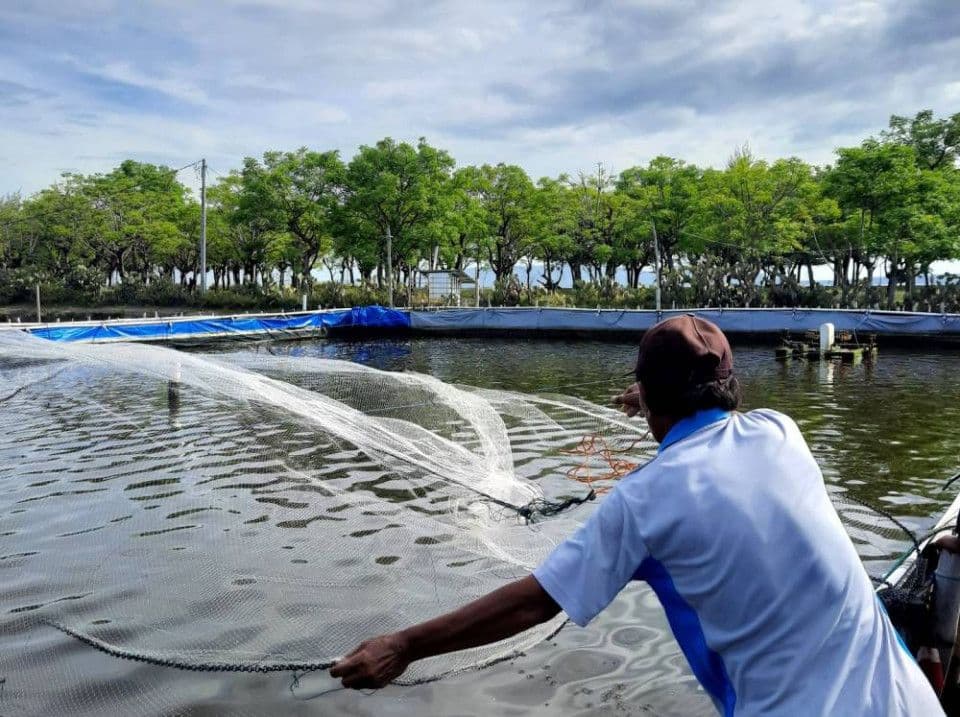
If you have visited a shrimp pond before, you might notice that the area feels hot, especially during noon. This is because the area only has very few trees. However, some other ponds may have more greeneries. Planting trees around shrimp ponds has some pros and cons.
Trees can freshen up the air and view, reduce pollution, be a form of eco-friendliness, restore the natural ecosystem by optimizing the absorption of CO2 and production of O2, as well as prevent abrasion, especially for shrimp ponds located by the beach. Moreover, planting trees is regulated by Indonesia’s Ministry of Marine Affairs and Fisheries No. 63/PERMEN-KP/2017, which states that shrimp farms must be located behind the green belt zone and not directly by the beach.
On the other hand, planting trees may reduce the available areas for shrimp cultivation. Moreover, if they grow too close to the ponds, the roots or leaves may enter the pond. However, with proper management and location selection, these drawbacks can be mitigated.
If you are interested in planting trees around your shrimp farm, one of the suitable plants is the mangrove plant. Mangroves grow well in both brackish water and seawater and are thus commonly found along coastal and estuary areas. Mangroves usually live in large groups. They grow large roots and bear fruit.
Here are some benefits of planting mangroves for the environment:
- Supplying nutrients to fertilize the soil and environments around it
- Purifying the water
- Protecting from abrasion, erosion, and landslides
- Absorbing toxic waste from pesticides and chemical fertilizers in the water
- Absorbing heavy metals in water
Aside from mangroves, there are other types of plants to plant around shrimp farms, such as the coastal she-oak, a tree that grows fast and adapts easily to its surroundings.
Planting trees around shrimp farms ensure a sustainable cultivation by reserving the environmental quality surrounding them. Let’s plant more trees so that the benefits can be gained by the environment and those around us. That way, we can ensure that the earth can still be an enjoyable place for the generations to come.
References
https://kkp.go.id/brsdm/bdasukamandi/page/541-mangrove-dan-manfaatnya
Ritohardoyo, S dan Ardi, G.B. 2014. ARAHAN KEBIJAKAN PENGELOLAAN HUTAN MANGROVE: KASUS PESISIR KECAMATAN TELUK PAKEDAI, KABUPATEN KUBURAYA, PROVINSI KALIMANTAN BARAT. Jurnal Geografi Volume 11 No. 1 Januari 2014: 43-57





